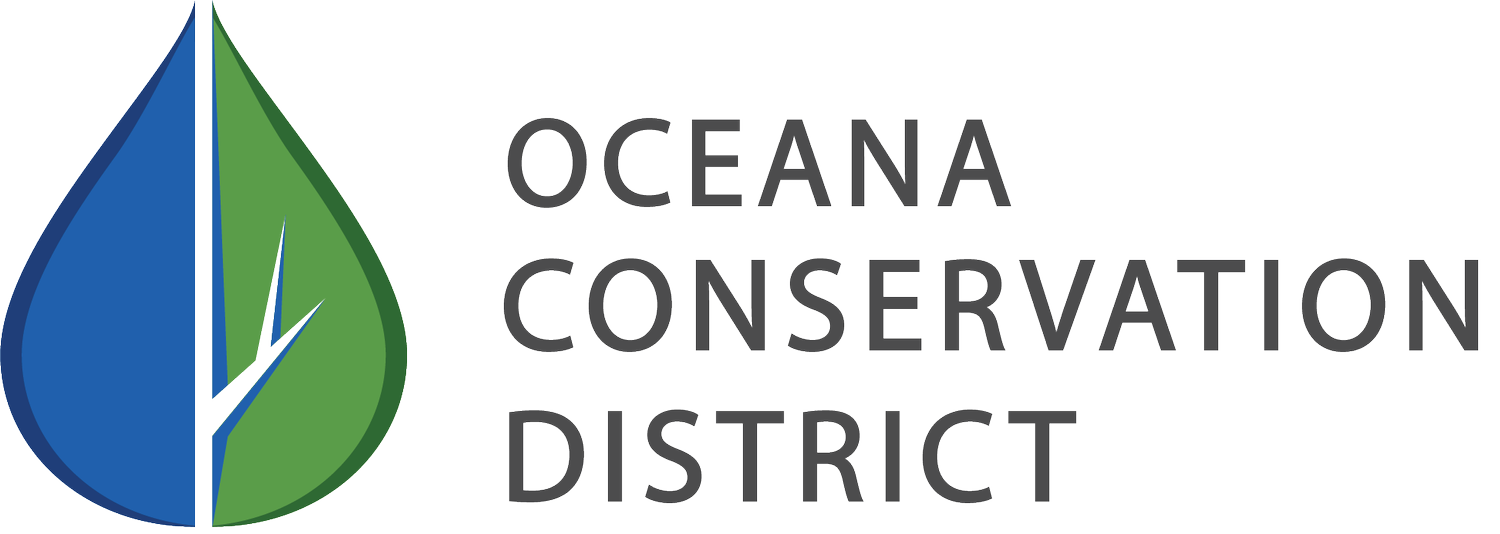WE ARE HERE TO HELP WITH INVASIVE SPECIES!
WHAT IS AN INVASIVE SPECIES?
Non-native (or alien) to the ecosystem under consideration AND
Whose introduction causes or is likely to cause economic or environmental harm or harm to human health.
Plants, animals, insects and even tiny microbes can be considered invasive.
how is Oceana conservation district helping to manage local invasive species?
Oceana Conservation District is part of an 7-county collaborative group called the West Michigan Cooperative Invasive Species Management Area (CISMA) that works together to help manage invasive species infestations in West Michigan. We actively pursue grant funds to manage invasive species at the regional scale. Treatment crews are based out of Kent, Ottawa and Muskegon Counties.
If you have something on your property that you think is invasive, we may be able to help. Thanks to the Michigan Invasive Species Grant Program and the Great Lakes Restoration Initiative, we have some money available to help provide treatment services to landowners. We prioritize treatments based on the level of infestation in our county and currently our target species include Phragmites, Japanese Knotweed, European Frogbit and Hemlock Wooly Adelgid.
Target Species in Oceana County
Hemlock Woolly Adelgid
HWA is easily identified November-April by their white, woolly egg masses. The masses are located on the underside of hemlock branches at the base of the needle where it attached to the branch.
Hemlock woolly adelgid (HWA) is a non-native invasive forest pest that is threatening native Eastern hemlock tree populations along the Lake Michigan shoreline of West Michigan. If left untreated, hemlocks will succumb to the stress of HWA and die within 4-10 years. If you have hemlock trees on your property and are located within 5 miles of the lake Michigan coastline, it is a good idea to check your trees regularly for signs of infestation.
If you identify an infestation on your property, please report the infestation by sending your address and extent of infestation to Stewardship Coordinator Emma Waatti at emma.waatti@macd.org. You then have three options:
Get on the waitlist for at-cost treatment through a neighboring Conservation District. For information and to sign up please visit Muskegon’s website linked here or contact HWA Coordinator Lance McCarty at lance.mccarty@macd.org.
Hire a private applicator. A list of certified applicators that have experience in HWA treatments and service the county is linked below.
Treat your trees yourself. A variety of resources on this option are provided below.
Resources Available to Landowners
A self-treatment workshop was held in April of 2024 to demonstrate the three methods avaible to landowners. All resources provided at this workshop, including the full presentation given by West Michigan HWA Coordinator for the state Drew Rayner, are linked below.











